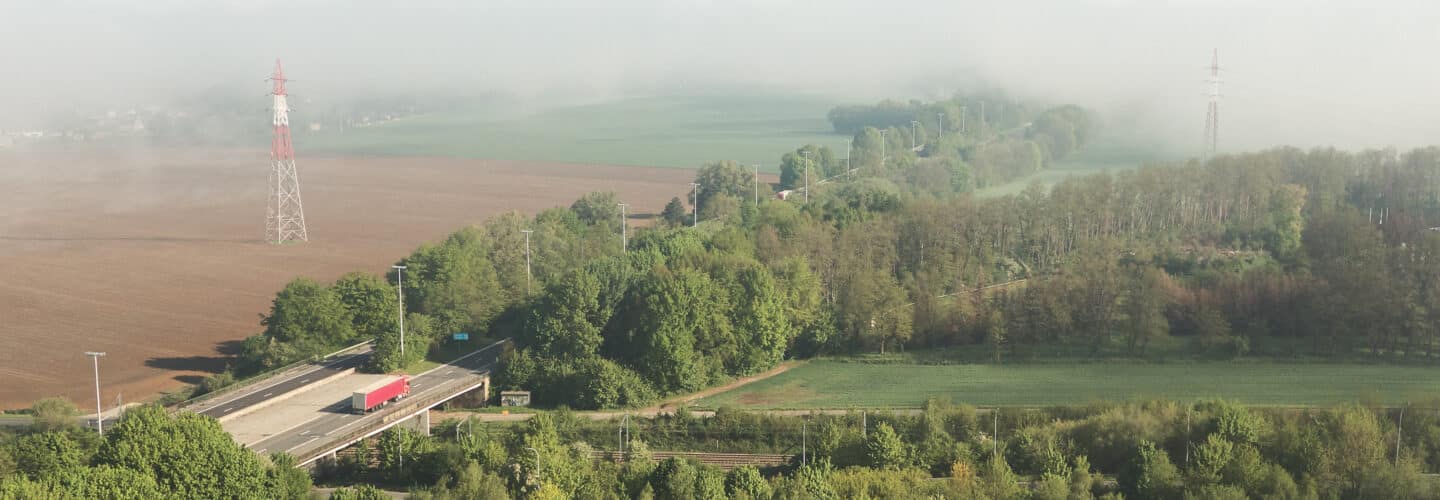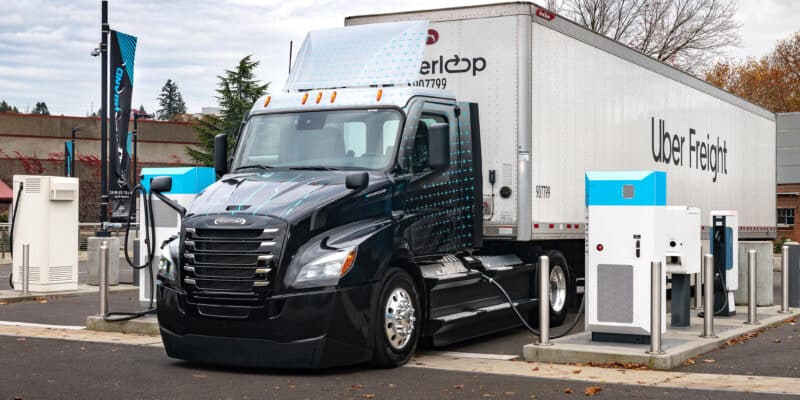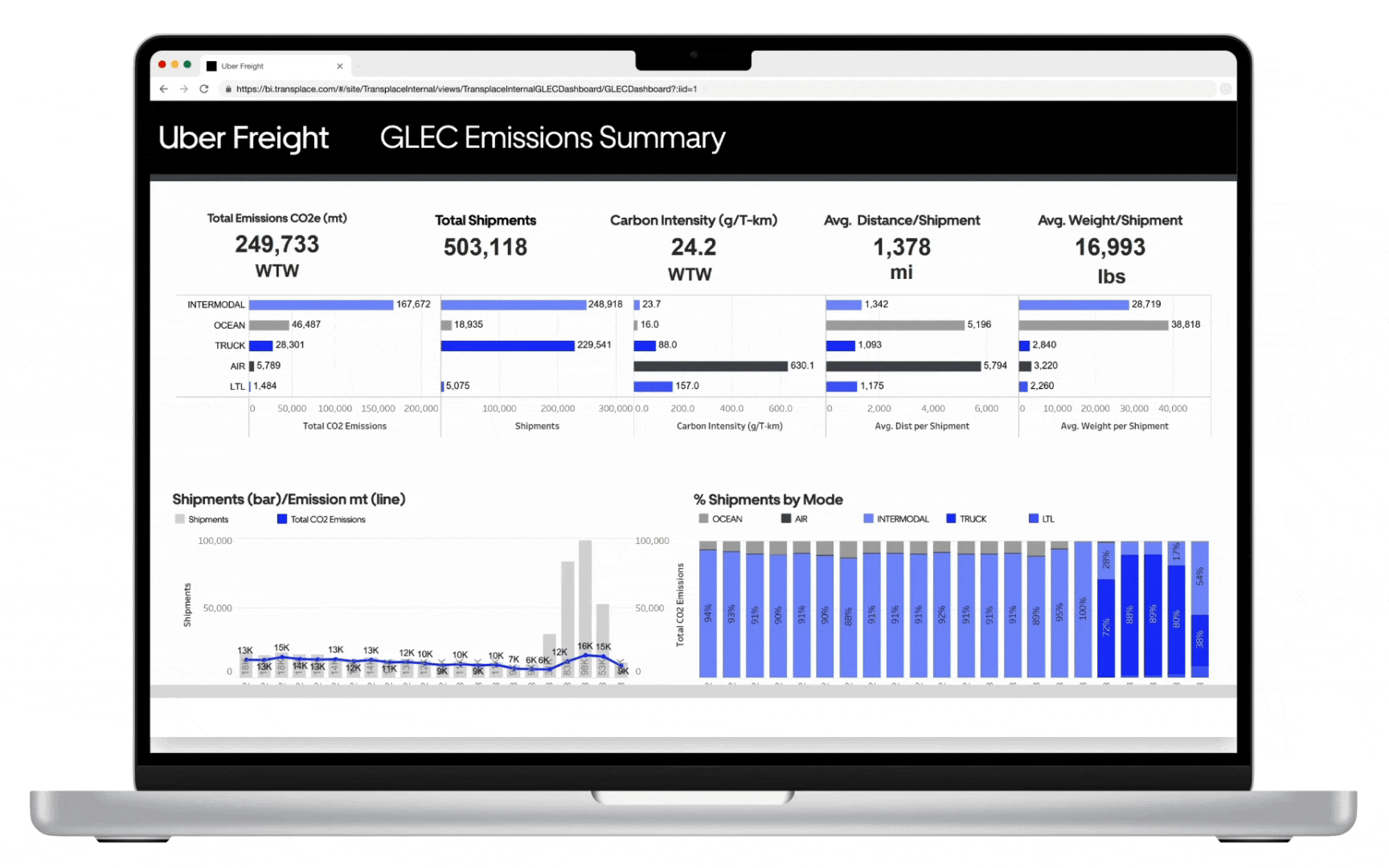Uber Freight and Greenlane to accelerate development of commercial electric truck charging stations

New research from Uber Freight outlines an electric truck deployment roadmap and underpins the opportunity to further decarbonize supply chains
Demand for Heavy Duty Battery Electric Vehicles (HDBEVs) is steadily on the rise, as companies look to meet climate-forward societal standards, quickly-approaching emissions reduction regulations, and their own ESG goals. In fact, 77% of U.S. shippers are considering them today or in the future. However, the availability and accessibility of adequate charging infrastructure is one of the largest hurdles for making commercial electric truck adoption and deployment a reality.
To accelerate the development and installation of public charging infrastructure for HDBEVs, Uber Freight and public electric truck charging solutions provider Greenlane, a $650 million joint venture between Daimler Truck North America, NextEra Energy Resources, LLC and BlackRock (through a fund managed by its Climate Infrastructure business), today announced a collaboration that’ll pave the way for greener supply chains ahead.
Through this collaboration, Greenlane will leverage insights from Uber Freight’s logistics network, representing $18 billion in active Freight Under Management (FUM), to unlock critical learnings regarding the future development and installation of public charging stations on roads in North America, starting with the United States. Uber Freight’s vast network data will augment Greenlane’s own data analysis to determine corridors that are prime candidates for early HDBEV deployment, charging infrastructure needs, and the addressability of shipping lanes for electrification. Additionally, the two organizations will explore leveraging Uber Freight’s marketplace technology to potentially create in-application charging appointment scheduling, surface Greenlane charging stations, fuel card discounts, and more directly to carriers.
Ultimately, Uber Freight’s network insights will be critical for Greenlane’s mission of building a nationwide charging network for commercial vehicles – starting with development of its first charging corridors in Southern California, followed by the Texas Triangle and northeastern United States.
“I am delighted that we will be working with Uber Freight to accelerate BEV adoption and help reduce the carbon footprint of freight distribution,” said Patrick Macdonald-King, CEO of Greenlane. “Our national network of EV charging and hydrogen fueling stations together with our Uber Freight collaboration will make the electrification transition easier for shippers. Together, we will pave the way for a greener and more efficient future in logistics.”
In addition, Uber Freight also unveiled a new whitepaper exemplifying the types of data-driven insights Greenlane will consider as it explores where, and when, to install its end-to-end charging stations. Uber Freight utilized its own network data – representative of 500,000 dry van loads that took place in 2022 – to better understand where charging stations are needed to meaningfully enable the deployment of HDBEVs and address sustainability challenges within the freight industry. Included in this analysis are findings regarding lane and region prioritization, facility enhancement recommendations for customers, and more. Click here for a deep dive unpacking the data and click here to download the research – which was independently reviewed and validated by the North American Council for Freight Efficiency (NACFE).
While major research and advances have been made in recent years for HDBEVs, there remains a lack of a publicly available, nationwide electric charging infrastructure for commercial vehicle fleets, especially for long-haul freight operations. Uber Freight’s network insights enhance the ability to develop and install public charging stations, which provides fleets with the confidence to run electric capacity without compromising on service expectations. Ultimately, this helps the industry at large meet the growing market demand for HDBEVs while addressing the unique challenges of sustainable logistics, setting the roadmap that will expedite the rollout of zero-emission freight transportation.
The demand from fleets and shippers to go electric grows daily. In fact, a recent survey conducted by Uber Freight and FreightWaves, 13% of U.S. shippers indicated that they are currently utilizing electric trucks – and they’re willing to pay an extra $90 per load for green transportation using electric trucks or other renewable fuels.
“Electric trucks present a tremendous opportunity to help decarbonize supply chains and significantly reduce global emissions,” said Lior Ron, CEO of Uber Freight. “We are thrilled to work with Greenlane on this initiative, as this collaboration exemplifies our commitment to reducing the impact of logistics on the environment and further establishes Uber Freight as a leading logistics network choice for customers looking to adopt and deploy electric trucks.”
This collaboration with Greenlane further exemplifies Uber Freight’s commitment to reducing the impact of logistics on the environment and decarbonizing global supply chains. In November, Uber Freight announced its company-wide sustainability commitments to shift 80% of global brokerage shipments to clean transportation by 2040 and achieve net-zero climate emissions with global corporate operations by 2030. Uber Freight also unveiled a new emissions dashboard that provides unparalleled visibility into emissions across a company’s logistics network to empower more sustainable decision-making.
The road to transforming supply chain sustainability and unlocking widespread freight electrification will be constrained by the maturity of the technology and availability of relevant infrastructure. However, it’s these types of commitments, key industry collaborations, network optimization, logistics expertise and cutting-edge technology that make Uber Freight uniquely positioned to help lead the charge.
Contact us to learn more about how Uber Freight, a leading logistics network of choice for freight electrification, can help shippers and carriers electrify their supply chain strategies.



